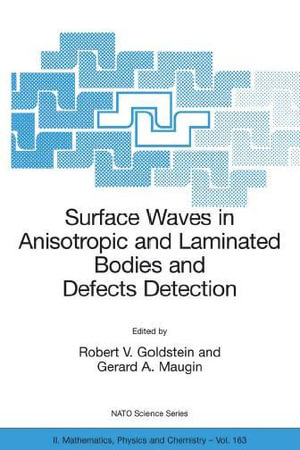
Surface Waves in Anisotropic and Laminated Bodies and Defects Detection
By: Robert V. Goldstein, ?Gérard A. Maugin
eText | 21 February 2006 | Edition Number 1
At a Glance
eText
$319.00
or
Instant online reading in your Booktopia eTextbook Library *
Read online on
Desktop
Tablet
Mobile
Not downloadable to your eReader or an app
Why choose an eTextbook?
Instant Access *
Purchase and read your book immediately
Read Aloud
Listen and follow along as Bookshelf reads to you
Study Tools
Built-in study tools like highlights and more
* eTextbooks are not downloadable to your eReader or an app and can be accessed via web browsers only. You must be connected to the internet and have no technical issues with your device or browser that could prevent the eTextbook from operating.
ISBN: 9781402023873
ISBN-10: 1402023871
Published: 21st February 2006
Format: PDF
Language: English
Publisher: Springer Nature
Edition Number: 1
You Can Find This eBook In
This product is categorised by
- Non-FictionEconomicsEconometricsEconomic Statistics
- Non-FictionMathematicsApplied Mathematics
- Non-FictionMathematicsProbability & Statistics
- Non-FictionSciencePhysicsClassical MathematicsWave Mechanics including Vibration & Acoustics
- Non-FictionScienceChemistryCrystallography
- Non-FictionSciencePhysicsMaterials & States of Matter
- Non-FictionEngineering & TechnologyMechanical Engineering & MaterialsMechanical Engineering
- Non-FictionEngineering & TechnologyMechanical Engineering & MaterialsMaterials Science
- Non-FictionEngineering & TechnologyTechnology in GeneralEngineering in General
- Non-FictionSciencePhysicsClassical Mathematics
























